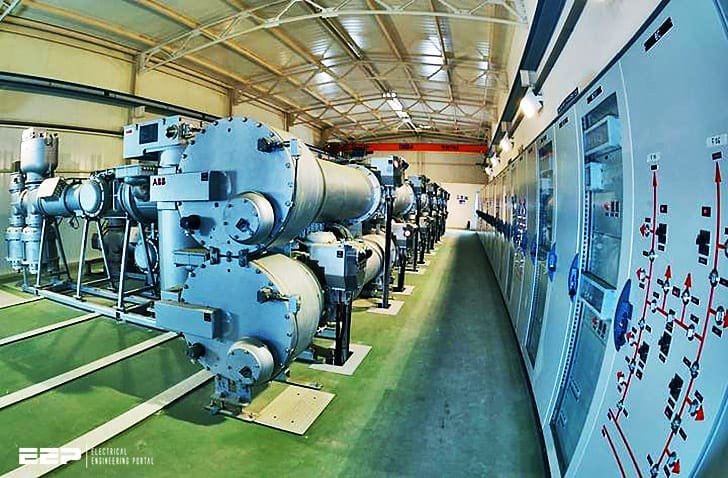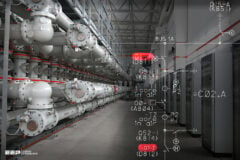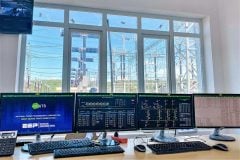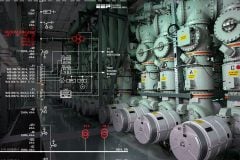GIS components
Gas-insulated substations (GIS) use circuit breakers, disconnect switches, and grounding switches, and have various means of indicating their position, either opened or closed, so the same as in air-insulated substation (AIS).

Operation of a GIS uses most of the same principles as operating an air insulated substation (AIS) although the various active components are physically configured differently. The first obvious difference is that the blades of the disconnect switches and the grounding switches used in a GIS are surrounded by grounded metallic enclosures.
This enclosure prevents the blades from being readily and easily visible to determine their fully opened or fully closed position. The second obvious difference relates to the bus conductors being located inside grounded metallic enclosures.
Generally a GIS requires more extensive electrical interlocking between the circuit breakers, disconnect switches (isolators), and grounding switches. The specific detailed method of operating and interlocking is generally specified by the ultimate user of the GIS.
- Circuit Breaker
- Disconnect Switches
- Nonfault-Initiating Grounding Switches
- High Speed (Fault-Initiating) Grounding Switches
- Three-Position Disconnect/Grounding Switches
- Switch Viewports
- Gas Compartments and Zones
- Interlocking
- Local Control Cabinets (LCCs)
Membership Upgrade Required
This content is not available in your premium membership plan. Please upgrade your plan in order to access this content. You can choose an annually based Basic, Pro, or Enterprise membership plan. Subscribe and enjoy studying specialized technical articles, online video courses, electrical engineering guides, and papers.
With EEP’s premium membership, you get additional essence that enhances your knowledge and experience in low- medium- and high-voltage engineering fields.
Black Friday Deal 💥 – Save 20% on Pro Plan with code BLACKFRIDAY
Copyright Notice
This technical article is protected by U.S. and international copyright laws. Reproduction and distribution of PDF version of this technical article to websites such as Linkedin, Scribd, Facebook and others without written permission of the sponsor is illegal and strictly prohibited.© EEP-Electrical Engineering Portal.
Related electrical guides & articles
Premium Membership
Edvard Csanyi
Hi, I'm an electrical engineer, programmer and founder of EEP - Electrical Engineering Portal. I worked twelve years at Schneider Electric in the position of technical support for low- and medium-voltage projects and the design of busbar trunking systems.I'm highly specialized in the design of LV/MV switchgear and low-voltage, high-power busbar trunking (<6300A) in substations, commercial buildings and industry facilities. I'm also a professional in AutoCAD programming.
Profile: Edvard Csanyi










